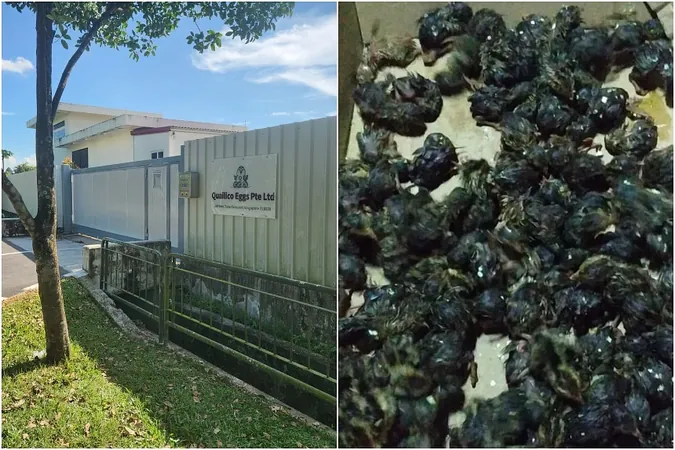
Shocking Discovery: How Salmonella Outsmarts Your Gut Defenses!
2024-11-16
Author: Mei
Introduction
A groundbreaking study from UC Davis Health has revealed the sneaky tactics employed by Salmonella bacteria, a notorious culprit behind food poisoning, that allow it to infiltrate the gut even in the presence of protective bacteria. This eye-opening research, featured in the Proceedings of the National Academy of Sciences, sheds light on the pathogen's ingenious ways of evading the body's natural defenses.
The Human Digestive System
The human digestive system houses trillions of bacteria, many of which produce crucial short-chain fatty acids (SCFAs) that play a vital role in combating harmful pathogens. Despite these defenses, Salmonella still finds a way to thrive. But how does it manage to sidestep these protective measures?
The Role of Salmonella
Andreas Bäumler, the study's lead author and a distinguished professor at UC Davis, explains that while Salmonella primarily invades the small intestine, it actually replicates in the colon. The researchers uncovered that Salmonella alters the nutrient balance in the gut upon entry. This disruption leads to inflammation of the gut lining and inhibits the normal absorption of amino acids from food, creating an environment that favors Salmonella's survival and multiplication in the colon, where helpful bacteria usually hold it in check.
Experimental Findings
Through experiments conducted on a mouse model, the team analyzed how Salmonella reshapes the gut's chemical landscape. They discovered a notable reduction in amino acid absorption into the blood of infected mice. Interestingly, two specific amino acids—lysine and ornithine—increased in concentration in the gut post-infection. These amino acids enable Salmonella to circumvent the growth-inhibiting properties of SCFAs, effectively restoring its ideal pH balance and making it easier for the pathogen to evade the microbiota’s defenses.
Mechanism of Survival
"Our findings reveal how cleverly Salmonella exploits the gut's nutrient environment for its own benefit," said Bäumler. "By impairing the body's ability to absorb amino acids, Salmonella cultivates a more favorable setting for itself within the large intestine.” The researchers found that Salmonella employs its virulence factors—molecules that promote disease—to activate enzymes that break down critical amino acids like lysine. This mechanism not only helps the bacteria dodge the protective effects of SCFAs but also fosters its growth within the gut.
Implications and Future Research
These new insights have significant implications. They could offer explanations for alterations in the gut environment seen in inflammatory bowel disorders such as Crohn's disease and ulcerative colitis. Researchers are optimistic that a deeper understanding of Salmonella's manipulations could lead to more effective treatments for gut infections and strategies for protecting the gut microbiota.
Conclusion
"This research takes a holistic approach to gut health," noted Lauren Radlinski, the study's first author and a postdoctoral fellow in Bäumler's lab. "By understanding how Salmonella operates, we can improve our strategies to support the microbiota during infections." Excitingly, the results from this study could pave the way for future therapies, including probiotics or tailored dietary plans aimed at enhancing the body's natural defenses against harmful pathogens. "By uncovering how pathogens exploit their host's systems, we can figure out ways to bolster the host's innate defenses," Radlinski concluded. With these astonishing findings, the battle against Salmonella may be on the brink of a breakthrough! Stay tuned as researchers forge ahead in their quest for innovative gut health solutions.



 Brasil (PT)
Brasil (PT)
 Canada (EN)
Canada (EN)
 Chile (ES)
Chile (ES)
 España (ES)
España (ES)
 France (FR)
France (FR)
 Hong Kong (EN)
Hong Kong (EN)
 Italia (IT)
Italia (IT)
 日本 (JA)
日本 (JA)
 Magyarország (HU)
Magyarország (HU)
 Norge (NO)
Norge (NO)
 Polska (PL)
Polska (PL)
 Schweiz (DE)
Schweiz (DE)
 Singapore (EN)
Singapore (EN)
 Sverige (SV)
Sverige (SV)
 Suomi (FI)
Suomi (FI)
 Türkiye (TR)
Türkiye (TR)